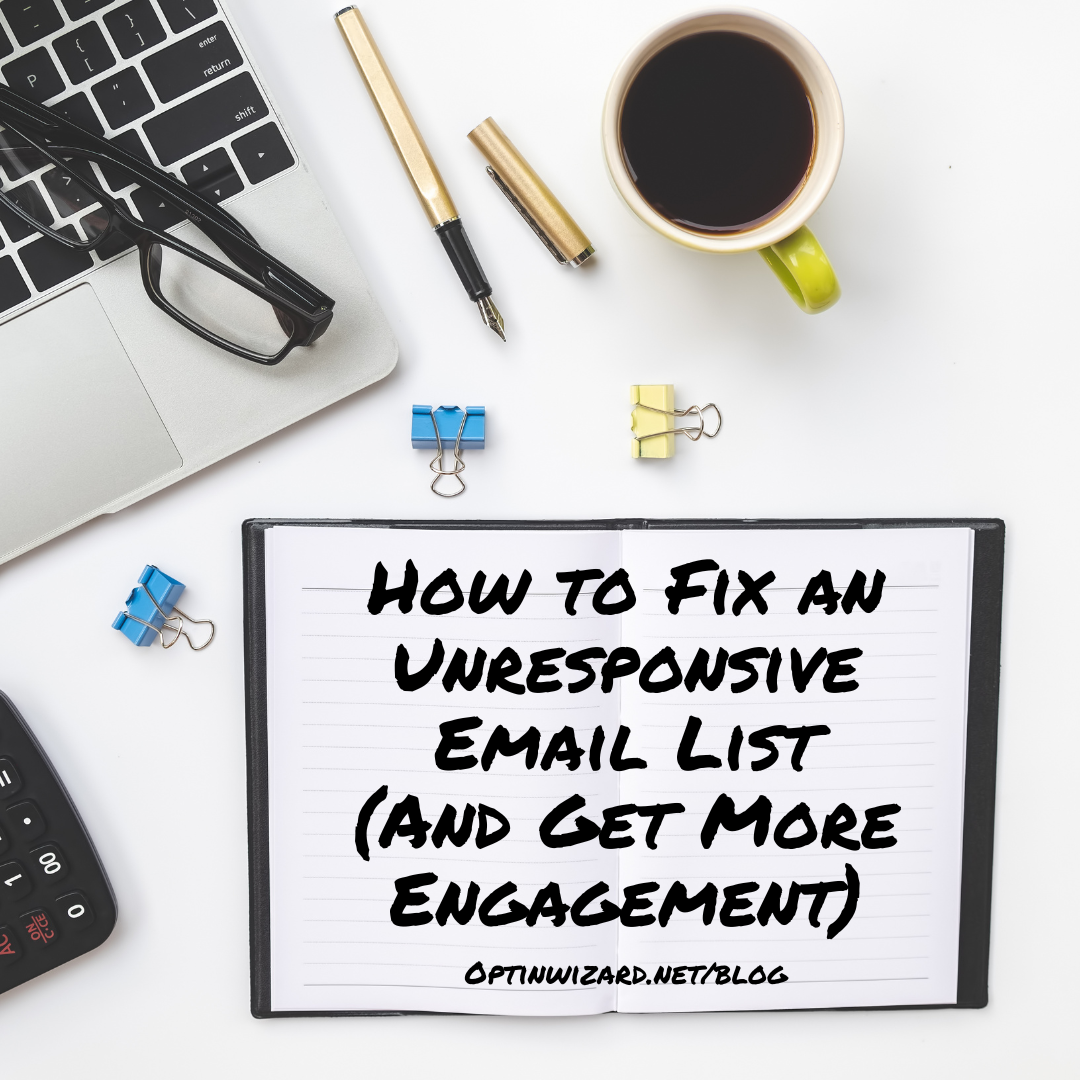You’ve built an email list, but no one is opening your emails. If your open rates are low and engagement is dropping, you may be dealing with an unresponsive email list, which can hurt your deliverability and overall marketing success. Even worse, when they do, they’re not clicking your links or engaging with your content. Sound familiar? You’re not alone. Many marketers struggle with an unresponsive email list, but the good news is that you can turn things around with the right approach.
In this post, we’ll cover why your list might be unresponsive and how to re-engage your subscribers to get more opens, clicks, and conversions.
Why Is Your Email List Unresponsive?
Many marketers struggle with email list engagement, and understanding why your subscribers aren’t responding is the first step to improving it.
Before you can fix the problem, you need to understand what’s causing it. Here are the most common reasons your subscribers might not be engaging:
1. Your Content Isn’t Connecting with Your Audience
If your emails are too sales-focused, boring, or irrelevant to your audience, they’ll stop paying attention. People want value, not just endless promotions.
✅ Fix: Focus on helpful, engaging, and relevant content. Share actionable tips, case studies, and real-life examples your audience can relate to.
2. Your Subject Lines Aren’t Grabbing Attention
If your subject lines are dull or overly promotional, people won’t open your emails. Crafting compelling subject lines is crucial for engagement. For tips on creating subject lines that boost open rates, see our article Email Marketing Basics: Crafting Subject Lines That Get Clicks. If your subject lines are dull or overly promotional, people won’t open your emails.
✅ Fix: Test different subject lines and use curiosity, urgency, or personalization to increase open rates. Example: “John, Are You Making This Email Mistake?” or “Quick Tip: How to Get 2x More Clicks from Your Emails”.
3. You’re Sending Emails Too Often (or Not Enough)
If you bombard your list with daily emails, they’ll tune you out. On the other hand, if you rarely email, they might forget who you are.
✅ Fix: Find a consistent email schedule that keeps you top of mind without overwhelming your subscribers. A good starting point is 2–3 emails per week.
4. Your Emails Are Landing in Spam or Promotions
If your emails aren’t reaching the inbox, people won’t even see them. For a deeper dive into avoiding spam filters and ensuring your emails land in the primary inbox, check out our post on Why Your Emails Are Landing in Spam or the Promo Tab (And How to Fix It). If your emails aren’t reaching the inbox, people won’t even see them.
✅ Fix: Avoid spammy words, limit links/images, use a custom domain email address, and ask subscribers to move your email to their Primary inbox.
5. Your Email List Isn’t Well-Targeted
If your subscribers weren’t interested in your niche in the first place (e.g., from poorly targeted solo ads), they won’t engage.
✅ Fix: Clean your list regularly to remove inactive subscribers and focus on getting quality leads from reputable sources.
How to Re-Engage an Unresponsive Email List
If your list has gone cold, don’t panic! Here’s how to wake it up and get people excited about your emails again:
1. Send a Re-Engagement Campaign
A simple “Are you still interested?” email can help you filter out truly inactive subscribers.
💡 Example subject: “Still Interested? Let Me Know Before I Remove You”
This lets inactive subscribers opt back in while cleaning your list of those who don’t respond.
2. Use Storytelling to Build Connection
People engage with stories, not just sales pitches. Try sharing a personal experience or a client success story.
💡 Example: Instead of just promoting a product, tell the story of how it helped someone achieve their goal.
3. Make Your Emails More Interactive
If your emails feel one-sided, people won’t engage. Ask questions, encourage replies, or include simple polls.
💡 Example: “Hit reply and tell me—what’s your biggest challenge with email marketing?”
4. Offer an Exclusive Freebie
Sometimes, people just need a little incentive to re-engage. A free guide, checklist, or mini-course can encourage opens and clicks.
💡 Example: “I just created this new email swipe file—grab it here for free!”
5. Segment Your List for Better Targeting
Not all subscribers are the same. By segmenting your list based on engagement levels or interests, you can send more relevant emails.
💡 Example: Create segments for active readers, occasional openers, and inactive subscribers—then tailor your emails accordingly.
Final Thoughts
Improving email list engagement is an ongoing process that requires consistent optimization. Whether you’re struggling with low open rates, inactive subscribers, or poor click-through rates, the key is to remain proactive and refine your approach.
An unresponsive email list doesn’t mean your email marketing is doomed. With the right strategies, you can wake up cold subscribers, increase engagement, and turn your list into a powerful asset for your business.
✅ Take action today: Test a re-engagement campaign, tweak your subject lines, and start focusing on quality content that keeps your audience coming back for more.
💬 What’s your biggest challenge with email engagement? Drop a comment below and let’s discuss!
